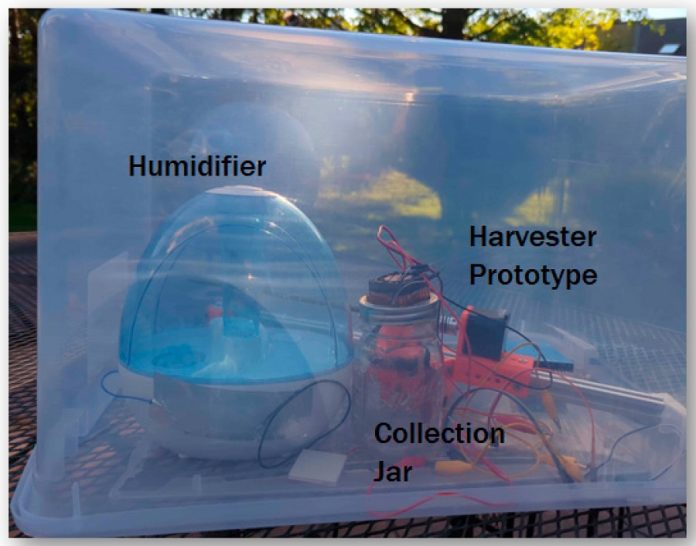
Researchers at The Ohio State University have created a new type of water harvesting device that is simpler, more efficient, and more portable than traditional models. T
his new device, designed using special temperature-sensitive materials, can pull clean drinking water from the air using much less energy than other methods.
Over 2 billion people worldwide lack access to clean drinking water.
Improving ways to gather water could help address this critical issue, especially in regions where water is scarce.
John LaRocco, the study’s lead author and a research scientist at Ohio State University’s College of Medicine, emphasized the importance of having clean water, saying, “You can survive three minutes without air, three weeks without food, but only three days without water.”
The team’s device uses a process called elastocaloric cooling, which involves using materials that change temperature when stretched or compressed.
This approach reduces energy consumption and makes the device smaller and more portable. It’s so compact it can fit inside a backpack, making it convenient for emergency situations or travel to remote areas.
Researchers compared their new device with a traditional dehumidifier that uses desiccant wheels—cylinders lined with materials that absorb moisture from the air.
They tested both devices for 30 minutes to measure their water collection, energy use, and heat production.
The results showed that the new prototype used about half the energy of the traditional system and collected more water on average.
John Simonis, a co-author and undergraduate engineering student, highlighted that the device is modular, which means it can be adapted to different environments. For instance, areas with moderate humidity levels, like the Philippines, Indonesia, Haiti, or Ohio, are well-suited for this water harvester.
However, there’s still a challenge to overcome. The current model is made with 3D-printed materials that can release microplastics over time, so the collected water needs to be filtered before drinking.
Despite this issue, the water the device collects is safe to drink after filtration.
With environmental changes and increasing threats to clean water supplies from climate change, pollution, and conflict, finding new ways to collect water is crucial.
Qudsia Tahmina, another co-author and associate professor of engineering, emphasized the importance of creating reliable and renewable water harvesting solutions to support communities in need.
The team hopes to scale up the device in the future, allowing it to serve entire households or even larger communities. Simonis noted that while their current model is intended for individual use, it could be expanded to extract large quantities of water with the same energy efficiency.
LaRocco concluded optimistically, saying, “We’re hoping that clean water for the rest of the world isn’t just a pipe dream.” The team has made their models available to the public, encouraging others to experiment and create their own dehumidifiers.



